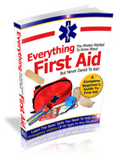Welcome to lacerations Guide
Lacerations Of The Skin Article
 To bookmark this article for further reading, click here.
To bookmark this article for further reading, click here.
Tongue Art: Lacerations Of The tongue
Almost from the beginning of time people have been adorning their bodies with some sort of art. Today’s world is no different.
Until fairly recently, it only seemed to be a certain type of person that would go to extremes, such as full body tattoos, or body piercing. A not so new trend is coming back to apply art to the tongue; art work in the form of having intentional lacerations to the tongue.
Young people, especially, endure pain to enhance their individuality. Some go to surgeons to have lacerations of the tongue performed in an artistic way. It is not at all uncommon to meet people that have some form of art on their tongues.
Sometimes a person feels that going to a surgeon to have lacerations of the tongue is a bit too expensive, so they learn how to do it themselves, or ask a friend to instill the lacerations to the tongue.
Splitting of the tongue is another work of art sometimes done by the individual without medical intervention.
The pain is not reported as intense as one might think; lacerations of the tongue can be made fairly easily once the individual works up the nerve to do it.
There is more than one way to make lacerations of the tongue; a razor blade is often the instrument of choice, but fishing line can also be used to make lacerations of the tongue.
Tongue art can be done by making careful cuts; common designs are diamond shapes, stars, and crosses. Whether the tongue is pierced and fishing line is fed through the tongue and pulled tight, or if a scalpel or razor blade us used, the object of making art on the tongue is to make precise lacerations of the tongue.
You might think intentional lacerations of the tongue would be done only by people that are members of some kind of subculture, but that couldn’t be farther from the truth.
Tongue art is so popular now among some people, that the trend of getting lacerations of the tongue is reaching the main stream. You might be surprised to find tongue art among a few of the very people you hold in high esteem.
The desire to have tongue art isn’t just to show off the finished masterpiece, but it’s the whole experience. The pain involved in receiving intentional lacerations of the tongue is part of the allure.
It seems that men and women from many walks of life want to push the limits of what they think they can endure, just to be different.
Whether the art work is done by the individual or by a professional, lacerations of the tongue normally heal very quickly; however, special care should be taken to prevent infection.
Eating might be a little painful until healing takes place. Keeping the mouth clean by rinsing it fairly often may be necessary to clear the mouth and tongue of food particles.
Depending on the depth of the cuts, lacerations of the tongue will heal in about a week’s time.


